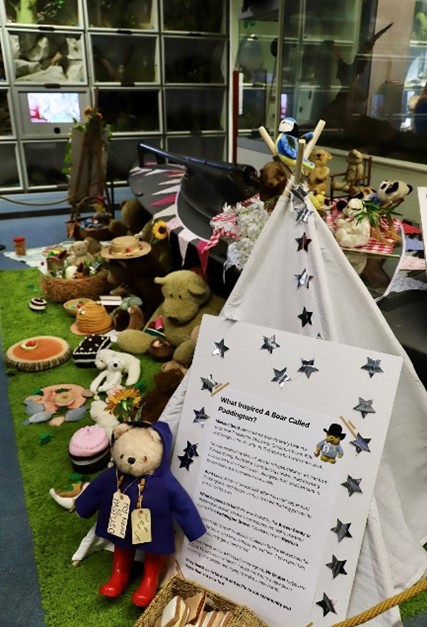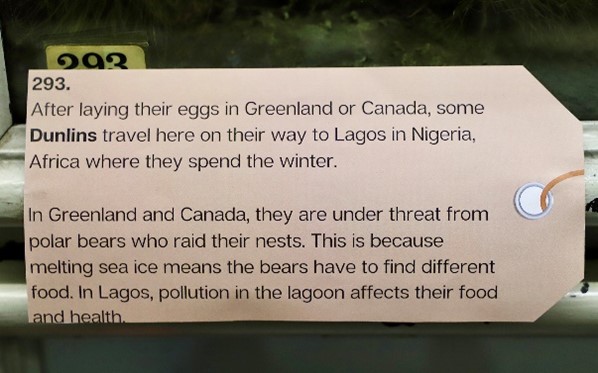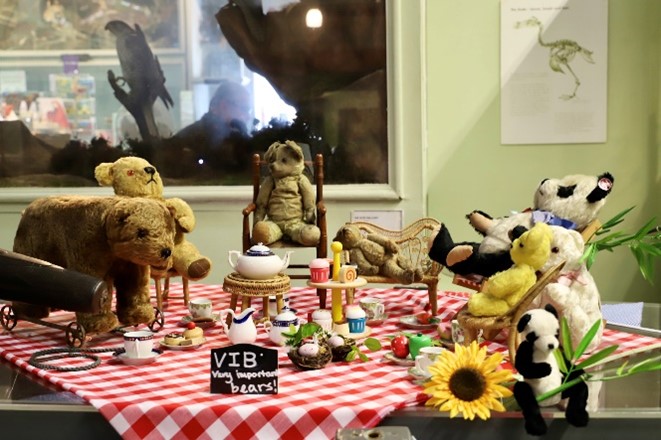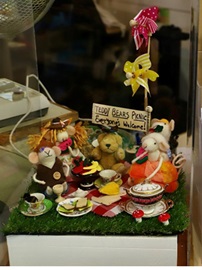How to host an anti-racist Teddy Bear’s Picnic in 5 easy steps

As part of our Esme Fairburn MA Collections funded Discover our Dioramas (DOD) project we have been hosting seasonal pop ups at the Booth Museum of Natural History. We wanted to explore ways to connect our historic natural science collections with the lives of our visitors and a way to do this was to connect to the seasons and the world outside the museum.

So, for the summer season we started to think about what humans get up to in the summer holidays and having a picnic is certainly one of them. The museum is opposite a very popular park full of people having picnics. We have a large audience of under 5s. We have two taxidermy bears on display and we also have a very soft spot for teddy bears.

1. Get inspired and learn from others
Our anti-racist Teddy Bear Picnic would not have happened without an article written by Professor Angela Smith from the University of Sunderland. In it she talks about the first Paddington published in 1958, A Bear Called Paddington, and describes it as being one of the early examples of anti-racist children’s literature.
As part of the DOD project we have also undertaken a four month period of audience consultation which is now leading a host of changes being made to our practise.
We are also working on becoming an anti-racist organisation, as part of an anti-racist city of Brighton & Hove. We work closely with our team of Teacher Ambassadors and alongside the city’s Anti-Racist Education strategy.
2. Decide on your central narratives and outcomes
Leading with Paddington Bear we had a central narrative of migration and a concept of ‘we all sit under the same stars’.
Migration Paddington Bear had a prominent place in the picnic and his own panel explaining more about the anti-racist themes in the book and a message of being welcoming to new people in our communities.

We all sit under the same stars
Hanging over the picnic are a string of silver stars. In the children’s trail we explain more about the star constellations Ursa Major and Ursa Minor commonly known as the Big Bear and Little Bear. These constellations have been referred to for 13,000 years. Our visitors are reminded that no matter where we live, we are all sitting under the same stars.
Be cosy, welcoming and inclusive
For each season we carefully select some new books for our cosy corner to enhance the narrative and for families to spend time together, or for people to have some quiet time reading alone. The key books to accompany the picnic were A Book of Bears: At Home with Bears Around the World by Katie Viggers and Are Your Stars Like My Stars? By Leslie Helakoski. We also put out our schools SEN resources of ear defenders, weighted toys, fidget toys, colour filters etc out for all audiences to use all the time.

Include historic collections
We used a template of Paddington’s luggage label tag to write pop up labels for some of the migratory birds on permanent display in the museum. We wanted to showcase how all animals, including humans, migrate to where they need to be – whether this is for food, shelter, a home or for love.
Tell stories across time and place
We gathered together a lot of traditional bear stories from around the world – In Finland Otso is the sacred King of animals, leader of bears but also the collective spirit of all bears. Finish tribes in the past both respected and feared Otso. In modern Finland bears are the national animal and still considered to be the King of the forest. One story tells how Ukko, the god of weather, threw wool into the sea and Otso was born from all the bits of wool that reached the shore. Another story says they were born from the constellation Ursa Major, the Big Bear.

3. Invite as many bears as you can but be mindful
We made a decision at the museum that as we have displays of extinct and at risk animals we simply cannot contribute to adding anything to landfill. So, we source as much as we can for our pop ups and events from our local scrap store The Scrap Store, charity shops, free shops and friends and family. We looked for bears who were more bear like than teddy like. We invited some other literary bears to join Paddington but were careful to research who. Rupert the Bear has some very racist content in some of the books and as we don’t have a Rupert in our own collections we did not seek him out in charity shops.
We did however invite a collection of VIBs (very important bears) from our own toy collection who had a special place on top of the boat.

4. Remember climate change and colonialism go hand in hand
We did not want to anthropomorphise our bears too much and we wanted them to be mostly eating bear food. But as we know many bears are now having to move closer to humans due to their own sources of food not being as available often due to colonial and contemporary use of land resources. We included some human food in the picnic as a talking point.
5. Be playful – the learning and the experience echo throughout the museum, not just at the Teddy Bear Picnic display
Dressing the museum – we want the museum to be a warm and welcoming space and we are working towards ‘ greening it’ and having subtle ways that it connects more to the nature outside. Each season our Curator of Natural Sciences dresses the Irish Elk who is the first specimen you see as it is mounted above our welcome desk. For summer the elk is festooned with sunflowers.

Mini creatures
Each season we have a display of an imaginative world of the Booth Museum mini creatures made by our wonderful Project Assistant. We have a lot of repeat visitors to the museum and it is exciting for them to see new but familiar things popping up.
Small world
We recreated elements of the picnic for our younger visitors. Small world play allows children to act out and explore real and imaginary worlds. It allows children to develop their creativity, their language and social skills.

Family trail
We created an adult led family trail to help explore our themes together. Included in this is more information on the star constellations, an opportunity to choose what food the bears should be having at their picnic, and what food you would like at a picnic. And a ‘find the bears’ activity to search out some cuddly bears dotted around the museum that would eventually lead you to our real taxidermy bears.
Holiday postcards and decolonised map
As it is the summer holidays we wanted to ask our audience ‘where would you go on your holidays and what animal would you want to see?’ – they wrote this on a postcard and posted to us in our post box. We then added them to our decolonised world map showing a more accurate representation of land mass. This is in contrast to the traditional world map (Mercator Projection) which puts Europe at the centre and distorts the true sizes of land mass.
